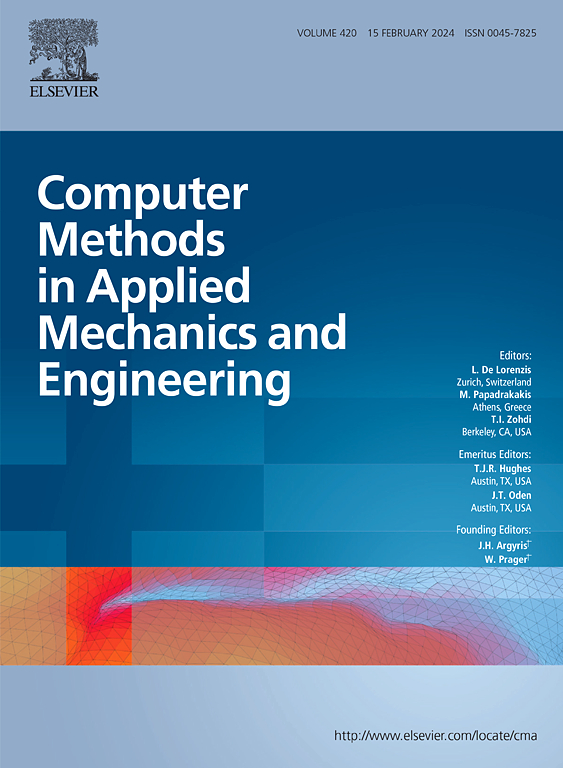Implicit stabilized non-ordinary state-based peridynamics for finite deformation and fracture analysis of nearly incompressible materials
IF 6.9
1区 工程技术
Q1 ENGINEERING, MULTIDISCIPLINARY
Computer Methods in Applied Mechanics and Engineering
Pub Date : 2025-02-27
DOI:10.1016/j.cma.2025.117879
引用次数: 0
Abstract
This work presents an implicit stabilized non-ordinary state-based peridynamic method (ImNSPD) to simulate the finite deformation and crack propagation in nearly incompressible hyperelastic materials. Firstly, a mixed displacement-pressure (-) formulation of the ImNSPD is derived to mitigate the volumetric locking issues expected in a purely displacement formulation near the incompressibility limit. Additionally, the shape-associated micromodulus and the dilatation-associated micromodulus are introduced as penalty factors in the modified force vector state and the modified hydrostatic pressure scalar state, respectively, to enhance the numerical stabilization. Subsequently, an incremental-iterative solution scheme based on the Newton-Raphson algorithm and the Newmark-beta method is proposed to capture the nonlinear response of hyperelastic materials in the time domain. The stability and robustness of the ImNSPD are assessed by studying several representative numerical examples involving the finite deformation of nearly incompressible hyperelastic material models. Moreover, an equivalent strain function is introduced as a failure criterion for nearly incompressible hyperelastic materials, and the good performance of the ImNSPD in predicting crack propagation is demonstrated through the fracture analysis of the twisting column test.
求助全文
约1分钟内获得全文
求助全文
来源期刊
CiteScore
12.70
自引率
15.30%
发文量
719
审稿时长
44 days
期刊介绍:
Computer Methods in Applied Mechanics and Engineering stands as a cornerstone in the realm of computational science and engineering. With a history spanning over five decades, the journal has been a key platform for disseminating papers on advanced mathematical modeling and numerical solutions. Interdisciplinary in nature, these contributions encompass mechanics, mathematics, computer science, and various scientific disciplines. The journal welcomes a broad range of computational methods addressing the simulation, analysis, and design of complex physical problems, making it a vital resource for researchers in the field.

 求助内容:
求助内容: 应助结果提醒方式:
应助结果提醒方式:


